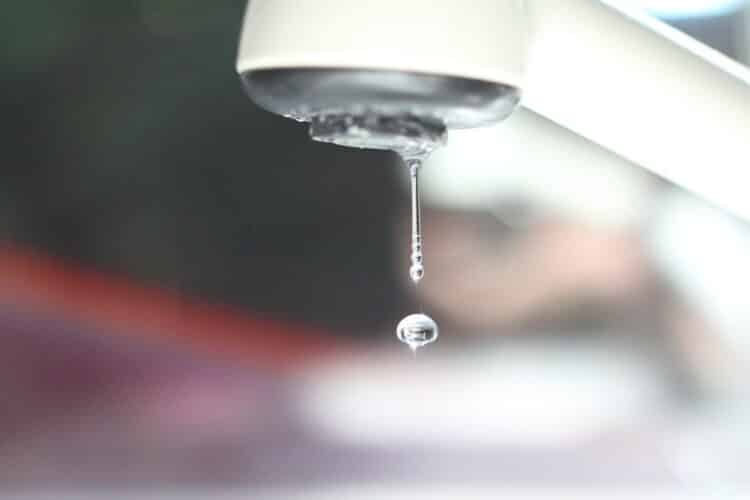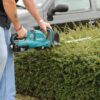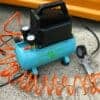
The first step to solving water hardness problems is figuring out if you have them. And you can do that at home using water hardness test strips.
Knowing how hard your water is will help you select the best water softener for your situation.
Not every location suffers from the same level of water hardness. The EPA reports that at least 15% of Americans have zero hard water problems. The rest of the population has water hardness issues that range from very soft to extremely hard.
These reasons are why the water softening methods that work in one area may not be the best in another location.
But you can figure out where your water supply falls on the water hardness scale.
Our article offers step-by-step directions for using water hardness test strips. We are happy to help you begin to solve your water hardness issues.
Table of Contents
How To Test Water Hardness
There are different ways to go about testing for water hardness. But the most accurate way to test the water supply to your home is with water hardness test strips. They are easy to source, buy, and use. You may even be able to find free hard water test kits.
To understand how these test strips work to measure the hardness of water, we must take a look at what’s inside them.
Water hardness test strips are plastic. But on one end, there is a small testing pad. The testing pad can absorb water.
On this testing pad are chemicals that respond to certain minerals in your water. These minerals are calcium and magnesium. The levels of calcium and magnesium in your water are what make it soft or hard.
The main chemical used in water hardness test strips is acetic acid. The name of this acid is ethylene diamine tetra. I won’t get into the science of it. Since it is so long to pronounce, from now on, we will call this chemical EDTA.
So EDTA in the test stips reacts to how much calcium and magnesium are in your water. They do this with codes of different colors.
The colors show the presence of calcium and magnesium in your water. Calcium and magnesium are the minerals that make your water hard. Each color shows a different degree of water hardness.
The color system used in test kits varies depending on the manufacturer. Most of the time, you find that the lower levels of hardness are in light greens and light yellows. The higher levels are usually deep reds, oranges, and browns.
But the color scheme changes with manufacturers.
These manufacturers may also add other components to the EDTA in their test strips to:
- make the results more accurate.
- lessen the time it takes to get a reading.
- improve the stability of the test to get correct results with each strip you use.
- increase the shelf life of the test strips.
- improve on the distinction of color between levels of hardness
- make it easy for the pads to absorb water.
But all water hardness test strips do the same thing. They react to the amount of calcium and the amount of magnesium in your water.
What Is In A Hard Water Hardness Measuring Test Kit?
A water hardness measuring kit comes with
- test strips
- Some kits may come with as many as 200 test strips. These test strips may be in a container or envelope.
- A color chart
- A measuring glass cup or bottle
- A desiccant
The color chart may be on the bottle with the test strips, on the envelope, or come as a separate part of the test.
Not all water hardness measuring kits come with a measuring container. If your kit has one, the measuring container will have a line to show how much water you should put in it. If it does not, the manufacturer may have included how much water you should use to do the test. Take a measuring cup to fill up with the right amount.
The desiccant looks like the little packets of silicone gel that come inside shoe boxes. Sometimes it may be made of Montmorillonite Clay.
These little packets come inside the bottle or envelope with the testing strip. The desiccant is there to absorb moisture and keep the strips dry. Every water hardness testing kit should come with a desiccant. Exposure to moisture ahead of a test can affect the test results.
Water Hardness By Degrees
Every year consumers get a confidence report from their water supplier. These reports either come through the mail, in an email, or in some other online method. Your water supplier might use an app or text notification to send out the results.
The confidence report should tell you the level of hardness in your water. But, nothing is stopping you from testing your water supply yourself.
The test strips measure the levels of hardness in your water by using color-coding. We talked about this earlier. Once you do the test, you have to run your color code against a number system. We will touch more on this system in a bit.
Measurements for water hardness comes in:
- grains for every gallon (GPG)
- milligrams for every liter (mg/L)
- parts in every million units (ppm)
- Ppm is another way of saying milligrams for every liter (mg/l)
Here are the different degrees of hardness in water.
How Hard Is Your Water?
Water has degrees or levels of hardness. The degree or level depends on where you get your water supply. Some areas are more prone to high levels of water hardness than others.
Soft water
Soft water has 0-2 grains in every gallon. This is the same as 0-17.1 milligrams in every liter or parts in every million units.
Water that is a bit hard
Water that is a bit hard has 3-5 grains in every gallon. This is the same as 16.1 to 60 milligrams in every liter or parts in every million units.
Water With Moderate Hardness
Water with moderate hardness has 6-8 grains in every gallon. This is the same as 61 to 120 milligrams in every liter or parts in every million units.
Hard Water
Hard water has 9-11 grains in every gallon. This is the same as 121 to 180 milligrams in every liter or parts in every million units.
Water That Is Very Hard
Water that is very hard contains 12-13 grains in every gallon. This is the same as 181-240 milligrams in every liter. It also means 181-240 parts in every million units.
Water With Extreme Hardness
Water with extreme hardness has 14 grains in every gallon or higher. A water supply with more than 240 milligrams per liter or parts in each million has extreme hardness.
How To Use Water Hardness Test Strips – Don’ts and Dos
Different manufacturers may have varying formats for their water hardness measuring kit. Some of them come with the test strips in a bottle. On that bottle are the color and number charts to measure the hardness of your water.
Others come with separate color and number charts. Not all water hardness measuring kits come with a measuring cup or bottle. But they all follow the same basic principle.
Typical water hardness test strips are plastic. But the ends have little square pads with the ability to absorb water.
In case you plan on doing your water hardness test while reading this, we will start with the don’ts first.
Water Hardness Test Strip Don’ts
When selecting a testing strip:
- do not touch the end with the testing pad.
- Do not use a garden hose to take a water sample.
-
Using a garden hose may add contaminants to your water sample and affect the results.
If you want accurate results:
- Do not leave the test strip in the water longer than instructed by the manufacturer.
- You should also not put the test strips under running water.
- Do not leave the bottle open.
- Do not remove the desiccant.
The pad is sensitive. Touching the testing pad may contaminate it or affect the chemicals in it. Any of these may lead to a false result.
Dong so may wash away some of the chemicals needed to test how hard your water is. The result you get might be false, which is what you do not want.
Doing any of these may wash away some of the chemicals needed to test how hard your water is. The result you get might also be false.
Water Hardness Test Strip Dos
Before you try to do the water hardness test, ensure that
Take one strip out of the container, envelope, or packet. I am repeating here that you must ensure that you do not touch the end with the testing pad. If you touch the pad, you may contaminate it. Contamination may affect your results.
You do not want your remaining test strips to stay in contact with air for too long. Moisture and other factors may spoil the strips, which could lead to wrong readings in the future.
Why should you try distilled water first? To ensure that your hard water test strips are not duds. Distilled water has no minerals in it, so you should not get any results. If the pad on your test strip changes color when you dip it into distilled water, then the strip is has a problem.
If you do not have a home water treatment system, water from any pipe or water source in and around your home will do.
For those who have a water treatment system, you may want to test the hardness before the water goes through it.
Find a faucet that draws water before it passes through your water treatment system.
Or
You may want to test your water after it goes through your home treatment system. Choose a pipe where the water passes through the water a softener.
Whichever source you get your water sample, let the water run until the temperature is steady.
Select a test strip. Remember, you should not touch the testing pad. And you need to seal the rest of the strips right away.
Add water until it reaches the measuring line.
Some water hardness measuring kits do not come with measuring containers. If you have one of those, that’s okay. Use any glass, bowl, or measuring container.
Ensure that the one you use is clean, dry, and has no water spots.
Anything could affect the chemistry of the test pad and so mess up your results. If the test gives you a quantity of water to use, ensure that you stick to those specifications.
If the measuring kit you use comes with a longer time, leave the test strip in the water for that period.
Keep it in this direction for about 10 to 30 seconds. You can rest the strip down on any surface while you wait for the results.
The wait is to ensure the test pad completes the chemical reaction process. Other tests may need a longer wait period.
How To Read A Water Hardness Test Strip
You’ve completed the water hardness test. Now, it is time to read the results. Here’s what you need to do.
Take the test strip you used. Hold the end with the testing pad up to the color chart that came with your water hardness measuring kit. The color chart lets you know how soft or hard your water is.
The color chart may also have numbers on it. Those numbers reveal how many minerals are in your water per gallon, per liter, or million units. Most times, you will see the terms GPM or PPM/mg/L used together.
Look at the color on your test strip. Find the same color on the color chart. The shade on the test strip will correspond with a number. That number will let you know how hard your water is.
Conclusion
Many households struggle with some level of hard water. Knowing what level of hardness your water has is the first step to solving this problem.
Once you do the water hardness test, finding the correct methods to soften your water supply is easy.


